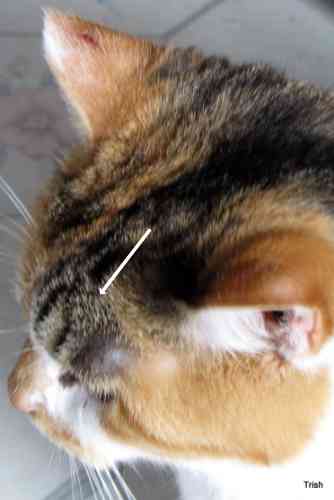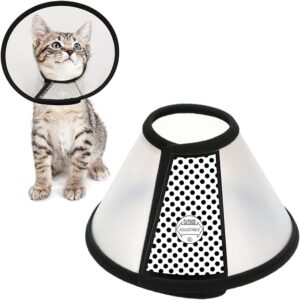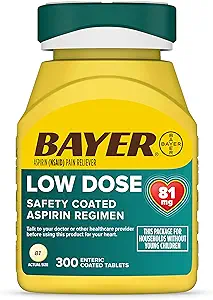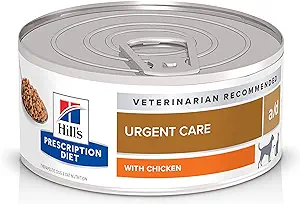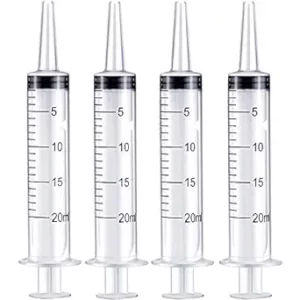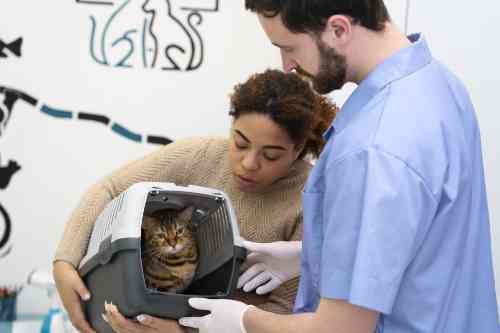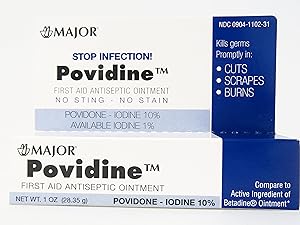An abscess on your cat’s tail
Best Home remedies
Abscesses are a common problem in cats. We often see abscesses developing on a cat’s tail, buttocks or hind legs. This is because in most cases a fight is the cause of an abscess on a cat’s tail. If you run away, you could well get bitten in the tail. In this article we will tell you what an abscess is, how it occurs and what symptoms you can see. And especially what is the best treatment for an abscess on your cat’s tail. So read on to find out how you can treat this painful condition in your cat yourself.
What is an abscess on your cat’s tail?
An abscess is a cavity under the skin that has filled with pus. It occurs because a deep wound has been made in the skin and when that wound has been created, bacteria have been left deep in or even under the skin.
Your cat’s body notices that intruders have entered his body and will unleash its immune system. In this case, it is mainly the pus cells that are attracted to those bacteria. In some cases, all bacteria are eaten at once and thus made inactive. Then not much else happens. But in other cases, the bacteria multiply so quickly that the pus cells cannot keep up. More and more pus cells then come to that location. All pus cells and bacteria together then form a cavity filled with pus.
After about three days, the skin will start to develop a weak spot that will burst open. The pus will be able to leave the body through that opening. This is accompanied by quite a bit of pain, a lot of dirty mess and a huge stench.
How do you recognize an abscess on your cat’s tail?
Once the abscess has opened, you will see a lot of bloody and smelly mess coming out of the skin. Then it is easy to diagnose an abscess. You can often also notice symptoms it in the days before the abscess bursts. Your cat is experiencing a lot of pain in his tail due to building up of pressure under the skin of his tail. He will lick and bite it quite a lot. You will feel a bump on its tail and when you touch it, your cat may scream in pain. So be careful with your examination, because your cat can really hurt you with its teeth and nails if you hurt him.
According to research conducted by Dan G. O’Neill, Danièlle Gunnmore and Dave C. Brodbel, (fighting) abscesses mainly occur in male cats younger than 8 years old. If your cat is 15 years old and has a swelling on its tail, the chance that it is an abscess is quite small.
What symptoms does a cat show if it has an abscess on its tail?
- Painful swelling on his tail
- This swelling can feel very warm
- Licking his tail
- They often also have small wounds from a fight elsewhere on the body
- Your cat may have a fever
- Your cat may want to eat less due to the fever
- He can isolate himself a little more because he is not feeling well.
- A bald spot may develop in the center of the abscess. This is likely to be where the abscess will burst.
How does an abscess develop on a cat’s tail?
As we mentioned above, a wound has occured and bacteria have been introduced deep into or under the skin. This could be a wound as a result of a branch or an accident with another object. But in the vast majority of cases there has been a fight with another cat. The other cat’s nail or tooth can easily pierce your cat’s skin during their fight. The other injuries don’t even have to be that severe. That’s why most people didn’t really notice that there was a fight.
Yet in those cases we almost always see other small wounds elsewhere on the body, ranging from 1 to a few millimeters in size. You have to consciously feel that. You often feel small scabs in the coat or you see a scratch running across his nose.
How do you treat an abscess on your cat’s tail?
It is wisest to take your cat to your vet. Naturally, your vet knows most about this and can determine the best treatment for your cat. If you don’t want to do this, you can do the following:
- Look for a bald circle of skin on the abscess that has a slightly different color or shine than the surrounding skin. This is often half a centimeter in size.
It is also possible that there is still a scab on the swelling - Try to see if your cat allows you to squeeze the abscess, increasing the pressure in the abscess towards the abnormal spot in the skin. If there is a crust, scratch it off. There is a good chance that you will open the abscess in this way. Keep a large number of clean cloths or paper towels at hand, so you can clean up as much gunk as possible right away.
- Now massage as much pus out as possible, through the opening. However, your cat may no longer allow this. Then just leave him alone for a while. Your cat will probably lick the area of his abscess himself, pushing out quite a lot of pus himself.
- You empty the abscess 3 times a day. If a crust has formed on the opening in the meantime, remove it.
- Your cat may lick his tail clean in the coming days. This might be quite often because he tries to removes the pus himself. But in extreme cases your cat can lick his skin so much that he destroys it. If you see this happening in your cat, it is better to prevent this licking. You can do that with a protective collar.
What else can you do to support your cat?
A painkiller
An abscess is of course very painful. That is why giving your cat a painkiller is helpful. It is best to give a painkiller for cats for this. However, you can only obtain this from your vet if you have had a consultation with your cat. Do you happen to still have it at home from last time? Then you give that to your cat.
Don’t have that at home? Then Aspirin is the only suitable painkiller that you can give to cats, which you can buy yourself in the store. OTHER SUBSTANCES WILL KILL YOUR CAT, SO DO NOT GIVE IT PARACETAMOL, IBUPROFEN OR OTHER PAIN KILLERS FOR HUMANS!!! Only Aspirin is suitable to give to your cat. You can give him half a tablet of a 81mg tablet once every 2 days (not twice a day!!!). Give it to him for a maximum of 7 days. The worst pain usually lasts only 2 days.
The Asprine also reduces fever, so your cat will probably also start eating better again after giving Aspririn.
Food
Is your cat also eating poorly because of the fever? Then it is wise to give him extra calorie-rich food so that he does not need to eat as much. Cats can very easily develop liver problems if they do not eat and they might die form it. So make sure that there is some food in his stomach by force-feeding him if necessary. You can dissolve the following food with some water and then give it into his mouth with a syringe. Try to get him at least 1 can a day.
When should you take your cat to the vet?
In all cases, it is wiser to take your cat to your vet than to treat it yourself at home.
But especially if your cat is eating very poorly or looks very ill due to the abscess on his tail, it is better to visit your vet. Even if you have just a little doubt.
A vet will likely open the abscess if it has not already opened on its own. They can also choose to place a drain under anaesthesia so that the opening remains open and the pus can continue to come out on its own. Furthermore, a course of antibiotics is usually prescribed and a painkiller given.
How do you prevent an abscess on your cat’s tail?
Preventing an abscess on your cat’s tail is sometimes difficult. It is important to prevent your cat from fighting as much as possible. You can do this by having your cat neutered.
However, did your cat fight and did you notice it? Then treat all wounds you see or feel with iodine ointment. If there is already a scab on the wound, scratch it off before applying the iodine. This way it can be absorbed better and kill the bacteria early, before an abscess can develop.
But unfortunately you can never 100% prevent abscesses from forming. Some cats just like a fight, and another cat is always bullied .
A case study
What are the complaints?
The owner of Tiger, a 5-year-old unneutered male cat, asked veterinarian Nanda for help. He had noticed a painful swelling on Tiger’s tail for two days and Tiger was not behaving as he normally did. He licked his tail excessively and reacted very angrily when the owner touched the tail. The owner had offered Tiger something tasty to eat to calm him down, but he didn’t want it.
Diagnosis
Veterinarian Nanda asked some extra questions and asked for a photo and quickly came to the conclusion that it was probably an abscess on Tiger’s tail. Especially because other wounds were visible in the photo. She asked the owner to try to look at the swelling and see if any different looking patch of skin was visible. This was the case. The owner was instructed to be a little bit mean to his cat and squeeze the painful abscess, as if he were squeezing a pimple, with the force going towards that different-looking skin. The owner did this and although this made Tiger really angry, it was successful. The abscess burst and all the pus came out.
Therapy
The abscess on tiger’s tail was emptied and cleaned as best he would allow. The gentleman has done this very consistently 3 times a day. After 2 days, hardly any pus came out. In the meantime, Tiger was also allowed to keep his tail clean by licking it. Fortunately, he did not do this so much that it damaged the skin. A protective collar was therefore not necessary in this case.
After the abscess burst, Tiger started to feel a bit better within a few hours and started eating again. That’s why Tiger’s owner decided not to give him Aspirin for a while and to see how things would develop. After all, his fever seemed to drop again and his pain seemed a lot less now that the pressure from the abscess was off. The owner did give Tiger a little hemp oil, which also has a mild analgesic effect on cats.
In the days that followed, Tiger received a cherry stone pillow against his tail 3 times a day. However, he only wanted to hold it against his tail for 5 minutes and then decided to just lie down with his body against it.
Tiger improved more every day. After 5 days the abscess was as good as healed and had a firm crust on it. He was eating as usual and no longer showed any signs of pain.
Follow-up
After 2 weeks, the owner made an appointment with his vet to have Tiger neutered. After all, he had come home before with significant battle wounds and the owner wanted to reduce the chance of this abscess happening again.
Good luck!
Hopefully the treatment will be as successful for your cat as it was for Tiger. Good luck to your cat!


